August 22, 2019

The water brand unveils a quintet of initiatives to align with parent company Coca-Cola’s goal of packaging containing 50% recycled material by 2030 as part of a circular economy.
August 13 was a watershed day for Dasani when the water brand unveiled a five-component salvo of sustainability initiatives aligned with parent company Coca-Cola Company’s global “World Without Waste” goal to make packaging with 50% recycled material by 2030.
“Today’s announcement is the largest sustainability initiative in the history of the Dasani brand,” said Lauren King, brand director, Dasani. “It’s rooted in providing sustainable options for our consumers, while doubling down on our commitment to minimize our impact on the environment. Over the last decade we’ve been on a journey to make Dasani more sustainable through new package design and innovation, and we are now accelerating these efforts in support our company’s ambitious goals to significantly reduce packaging waste around the world by 2030. While there is no single solution to the problem of plastic waste, the additional package and package-less options we are rolling out today mark an important next step in our effort to provide even more sustainable solutions at scale.”
The news centered on five parallel initiatives involving hybrid bottles from renewable resources, a major entry into highly recyclable aluminum, package weight reduction research, recycling-enhancing labeling and packaging-reducing dispensing for foodservice outlets.
The day of the announcements Packaging Digest interviewed Sneha Shah, group director, packaging innovation, Coca-Cola North America, who discloses details and reasoning behind these initiatives.
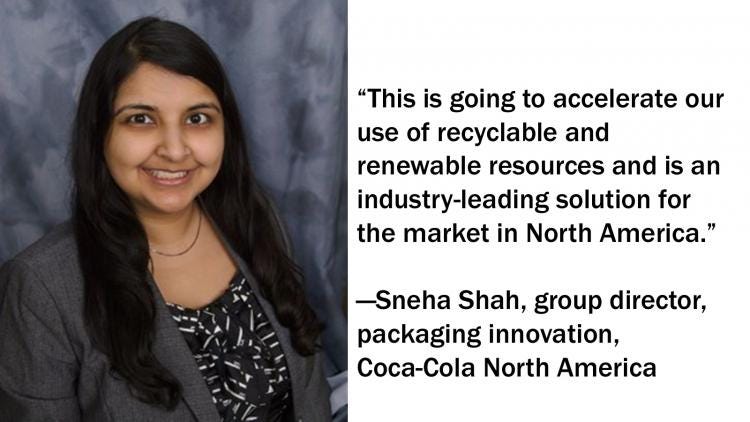
1. The debut of the HybridBottle, the next generation of the PlantBottle
The HybridBottle is Coca-Cola Company’s first package in the United States to be made with a mix of up to 50% plant-based renewable (PlantBottle) and recycled PET (rPET) with the balance virgin PET.
Rather than a tidy 50/50 split of the sustainable content constituents, the sustainably enhanced bottle a mix of around 30% recycled (rPET) content and 20% renewable (PlantBottle) content with the remaining balance virgin PET.
Along with recycling efforts, the HybridBottle promotes renewable resources such as sugarcane and corn.
The PlantBottle, the company’s current sustainably enhanced benchmark standard, is mix of 30% renewable and 70% virgin PET, meaning that the HybridBottle will remove an incrementally larger amount of virgin material from the brand’s portfolio.
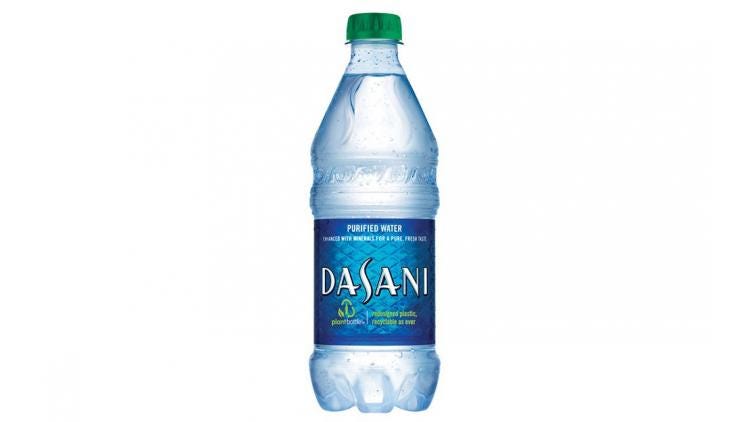
Shah identified three key considerations for this development:
Sourcing of recycled content. While tapping its current suppliers, Coca-Cola is also bringing on six additional mechanical processing rPET suppliers in 2019 to ensure consistent quality of materials and performance of food-grade material sourced for use in the HybridBottles, though Shah declined to identify them by name.
Quality of the material. Those requirements included it being food-grade material with proper coloring/clarity.
Packaging performance. This includes the entire supply chain through to the consumer experience and with overall scalability.
“This is going to accelerate our use of recyclable and renewable resources and is an industry-leading solution for the market in North America,” Shah states.
Anticipating a mid-2020 national launch as a 20oz bottle, the HybridBottle’s composition matches perfectly with the company’s 2030 target for 50% recycled content in packaging.
In related news from early 2019, the company made the PlantBottle technology available to all interested companies, including competitors. Currently, only a limited number of suppliers produce the type of biomaterial used to make PlantBottle resin, which adds complexity and cost to the production process. By encouraging more use of bioPET by companies both inside and outside the beverage industry, Coke hopes to scale up demand and drive down pricing.
“This is very exciting news for us because we want more companies in all food or beverage markets to participate and leverage the technology,” Shah told Packaging Digest.
Aluminum cans enter the packaging mix in three ways
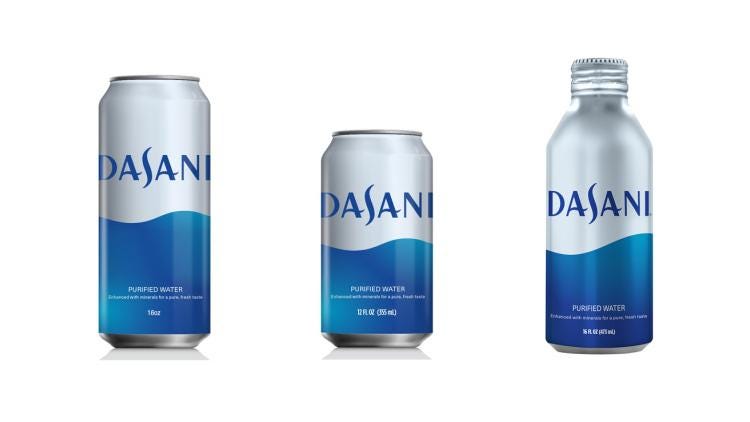
2. The introduction of new 12- and 16-ounce aluminum cans and new 16-ounce aluminum bottles
Although Coca-Cola has a lengthy history in aluminum packaging for carbonated soft drinks and sparkling waters among other products, it’s making a major new move into metal cans and bottles for Dasani still water.
Canned Dasani will debut in a 16oz size later this year to be followed by a 12oz size, which will be joined next year by resealable aluminum bottles to bring on-the-go portability and multiple consumption occasion format to Dasani.
Dasani’s sparkling waters have been in beverage cans as have other of the company’s brands including teas and lemonades.
Rather than moving the brand away way from plastic bottles in reaction to public concerns, Shah positions it as a move to leverage opportunities in aluminum packaging for consumers and for the brand.
“This meets changing consumer preferences in creating a format choice also paired with consumer recycling behavior,” Shah says. “Both PET and aluminum have value in the recycling market, and aluminum’s higher recycling rate helps with our overall World Without Waste goals. We want to inspire consumer behavior to recycle to help get the entire value chain working towards that goal as part of a circular economy—aluminum plays a key role in that bigger picture.”
The canned version will first be introduced into foodservice outlets in the Northeast in targeting “certain drinking occasions where customers have higher preference to enjoy or choose that aluminum package.”
While it is not needed for sparkling beverages, will nitrogen dosing be used for the still version?
“We’re looking at that, which we use for a lot of our beverages before sealing,” she responds. “Whether we use it or not, it would not have any impact on the taste profile or performance of the pack.”
While losing literal transparency that’s important to some consumers preferring plastic, aluminum represents “a little more of a premium drinking experience,” Shah notes, that will appeal to a different consumer segment than PET bottles.
Shah acknowledges that the addition of cans will impact production operations. “We’re considering modifications to our lines and capabilities at multiple plants to support a national launch starting in the Northeast in late 2019.”
Dasani embraces weight loss
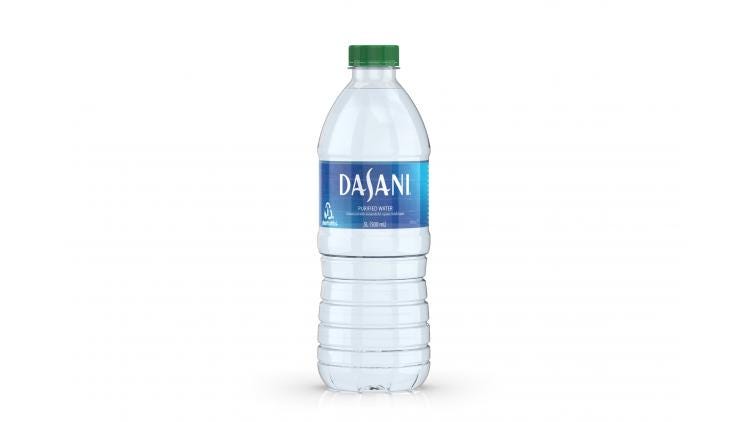
3. Continued lightweighting across the Dasani package portfolio
This tried-and-true method to source reduction supports Dasani’s overall efforts to reduce the amount of virgin PET plastic procured by the Coca-Cola system.
Now Coca-Cola is leveraging new technologies in taking a closer look at packaging design to reduce weight gram by gram.
"It's part of our new design process where we are challenging to maintain or evolve the performance aspects and maintain beverage quality as part of a holistic package system." Shah explains. "We don’t want to take so much weight out that we have to add somewhere else instead as balance perspective as to what makes sense for that particular package."
Lightweighting R&D is all encompassing, according to Shah. “The closure and entire neck finish contribute to bottle design and lightweighting. Really everything affects the total weight so we assess at the whole system of bottle, closure, label, secondary packaging—with the closure an enabler of the whole lightweighting program.”
Shah says that they will first take a look primarily at the 500mL bottle before turning to other sizes starting with the 20oz size. “We are prioritizing those two sizes because they are critical components of the portfolio,” Shah points out.
What do you think of KHS’ "Factor 100" bottle that brings the weight of a 500mL bottle down to an incredible five grams?
“That’s an incredible development,” agrees Shah. “We have connected with KHS and all OEM suppliers of bottle manufacturing systems—we’re supportive of all their work in using new technology for lightweighting.”
To read more about the Factor 100 technology in a June 2018 report published by PlasticsToday, click here.
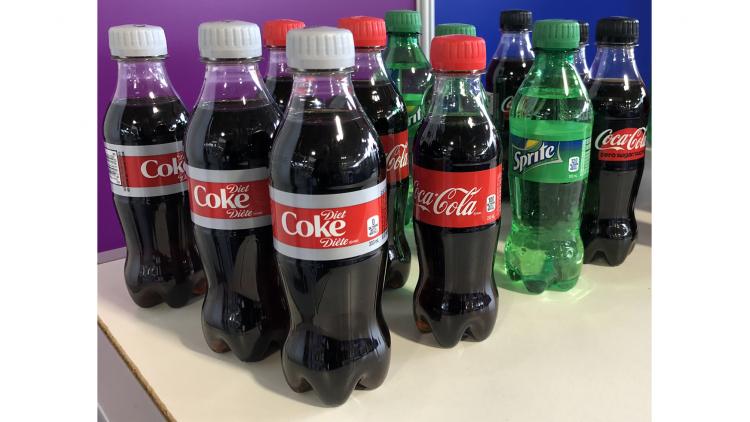
“Glass barrier” PET bottles
As an aside and because we were speaking with the company's lead in packaging innovation, Packaging Digest also asked Shah about KHS’s Plasmax technology that coats small 250- or 300-mL bottles internally with a silicon oxide (SiOx) “glass” barrier layer, a technology that was commercialized recently by Coca-Cola Canada (shown in above image).
“Plasmax coating tech is something we took a leadership role in,” Shah emphasizes. “In fact, we launched that type of package in Asia four or five years ago and are now using it in Canada as an enabling technology that’s part of our ‘toolkit’. While that specific bottle is not in the U.S. market today, the technology provides excellent shelf life characteristics to the bottle and reduces overall weight, which is sometimes a problem in smaller packages.”
Is there a particular range of bottle sizes where the tech is optimized?
“We take a look at each bottle,” responds Shah. “The tech itself might have some limitations, but we would assess using it case by case looking at the design of the package, the environment it will be in and the shelf life that’s needed…there are a lot of lot of dimensions to consider. However, overall there’s a strong case for the technology because of the amount of material you’re able to reduce in the bottle.”
According to a June 2019 report in PlasticsToday, Coca-Cola Canada was able to achieve a 30% weight reduction while blowmolding both size bottles from the same 14-gram preform.
Labels for recycling, packaging-free Dasani and smart design

4. The addition of How2Recycle labels to all packages.
This will help educate and encourage consumers to recycle after use and will be rolling out on all Dasani packaging starting this fall (sample image for a generic plastic bottle is shown above).
“How2Recycle is being adopted by industry and we are looking at it from a North America Coca-Cola perspective and applying it as opportunities arise,” says Shah. “We believe this is a great step forward in consumer education—consistent messaging can go a long way in increasing the amount of recycling behavior we see. Our package itself is an important piece of real estate and a key touchpoint with consumers. While consumers may be familiar with recycling for aluminum and PET, we still want to progress towards more. Our goal is to collect an equivalent of every package we put into the market. We are looking at applying the How2Recycle label across the Dasani portfolio.”

5. The expansion of package-less Dasani PureFill water dispensers
In deploying 100 PureFill units across the country beginning in fall 2019, the only non-packaging aspect of these initiatives aims to reduce the amount of prepackaged bottled water that consumers use while making it more convenient for them to enjoy the brand.
According to Shah, the additional units are a smaller footprint evolution of the successful Coca-Cola Freestyle platform, and garner more efficiencies and scale than the previous test version of PureFill. It’s a compact countertop unit with a smaller that features the proven microcartridge technology loaded with flavor ingredients. Consumers can drink Dasani as-is piped and filtered from local water supplies or enjoy the brand flavored in still or sparkling versions.
Shah says it can be used by a lot of different types of foodservice outlets. “Operators need only a water supply and power,” she adds, “and consumers might have refillable container to use.”
Another benefit of the units is that they provide the company with consumer information about flavor preferences and how they use the system.
A foundation built on smart design
A common thread that guides and supports these five sustainably-focused endeavors is what Shah calls smart design.
“Designing our packages to reduce the amount of raw materials used and incorporating recycled and renewable content in our bottles to help drive a circular economy for our packaging is an important part of our commitment to doing business the right way,” she says. “We are working diligently to continually reduce our overall environmental footprint through smarter package design, procurement of recycled and renewable materials while continuing to deliver exceptional consumer experiences.”
Shah identifies the three components of smart design:
1. Consumer or customer focus design. We want packages that are convenient, compelling and easy to use.
2. Sustainability. It is really at the center of things. We want each of the packages we launch to incorporate recycled content, are recyclable and maximize the materials we leverage for that package or design.
3. Leveraging our scale and efficiencies. It's the only way we can bring that package forward into the market.
“When we can maximize each of those, we have what we call a ‘winning package’,” she tells Packaging Digest.
You May Also Like


